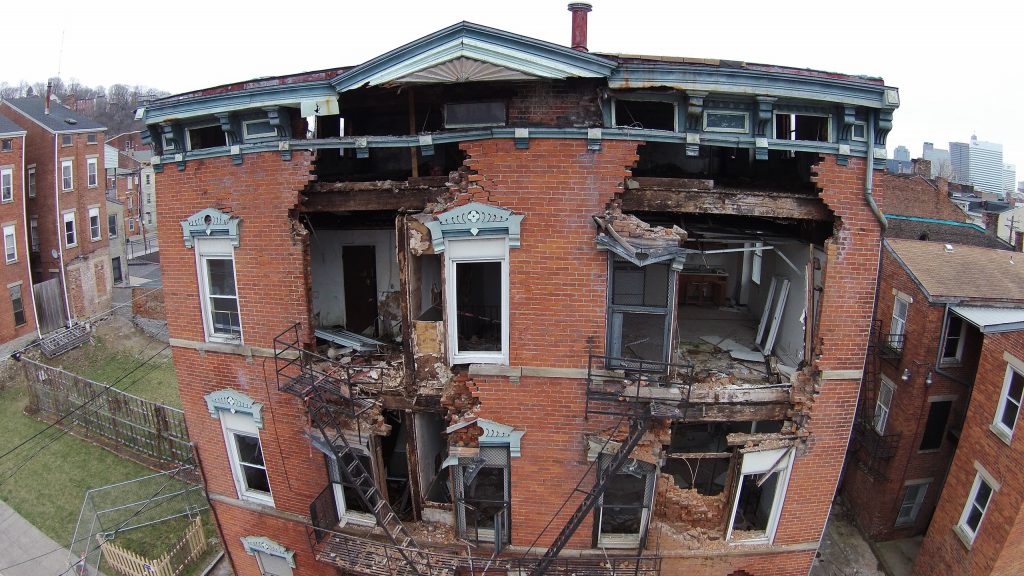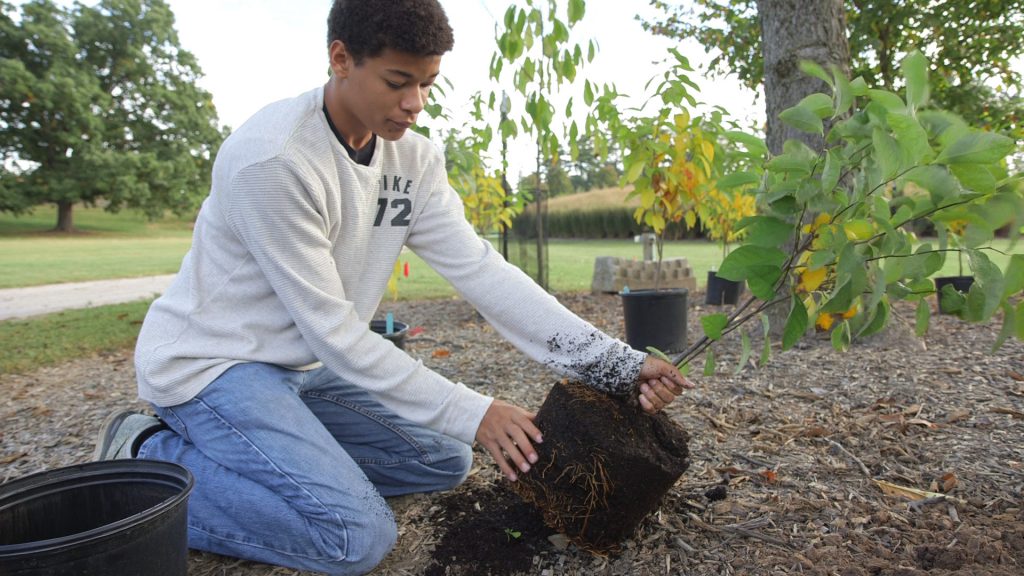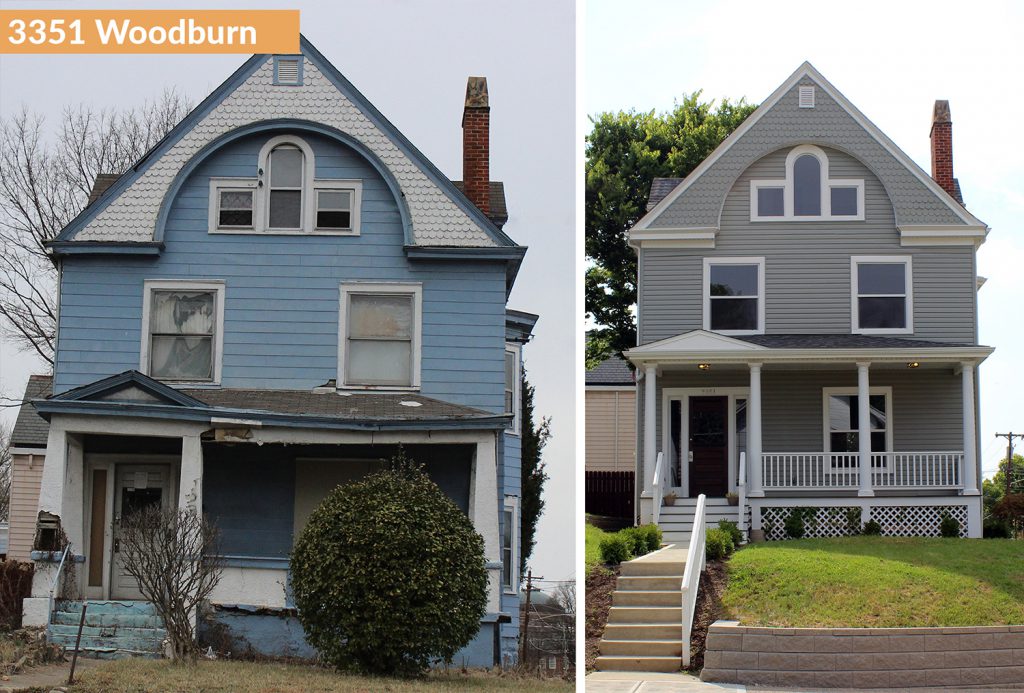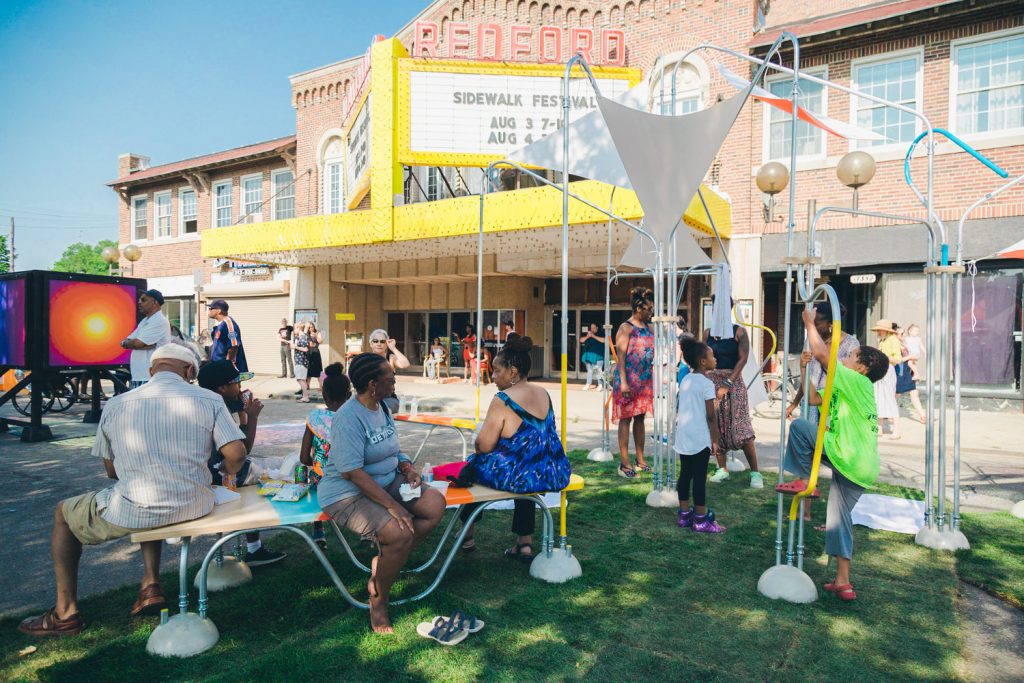Top takeaways from the Ohio Landbank Conference
Did you miss the Western Reserve Land Conservancy's Ohio Landbank Conference last month? Don't worry, here are some of our associates’ top takeaways.
Cincinnati has character; saving it takes partnerships
Taylor Gruenwald, Commercial Development Associate

1706 Lang in Over-the-Rhine partially collapsed following a cold snap in 2015. The brick building, built in 1855, was facing demolition, but the Hamilton County Landbank stepped in with the support of residents and the City of Cincinnati to repair and stabilize the structure. The Landbank was able to hold and maintain this structure until the market in the area could support redevelopment. The end-user, a local Minority/Women Business Enterprise (W/MBE), was recently approved to acquire and redevelop the property through the Landbank’s application process, with renovation set to begin at the end of 2019.
I presented on a Historic Preservation panel coordinated and moderated by The Port's Megan Meyer. Other panelists included Ed Cunningham from the City of Cincinnati's Department of Buildings and Inspections, Jason Chamlee from Model Group, and Steve McQuillin, a preservation expert and consultant from Northern Ohio.
Historic preservation may take on many different meanings depending on your toolsets, objectives, and funding sources, but across the board, preserving historic structures is a collaborative process. The Hamilton County Landbank has the ability and tools to stabilize and hold properties, but we are only one part of the larger preservation ecosystem. Bringing these structures back to productive use requires a collective effort among the City's code enforcement team, the Landbank, philanthropic organizations, and developers that value preservation and have experience leveraging additional funding streams such as historic tax credits.
Historic structures are a vital part of a region's character – they contribute economic value and a sense of place to a neighborhood. The Landbank's primary role in preservation is buying time for threatened structures. The Landbank is positioned to stabilize properties, or secure them against the elements and bring them into compliance with minimum standards of the building code, and hold them until we identify an end-user down the road. Without this stopgap, the property could rapidly deteriorate to the point of collapse or emergency demolition - an irreversible intervention.
"Stabilization makes a property much more viable for redevelopment in the future, and the Landbank's tools enable it to hold and maintain a property until the surrounding market can support such a project."
Across the board, the common barrier to stabilization and preservation is funding. Each panelist acknowledged that it is virtually impossible to save these structures without some amount of subsidy, which means that more resources must be identified to preserve our region’s icons for future generations.
Don't forget the trees
Amy Bancroft, Landbank Associate

Still from the documentary, Trees in Trouble, which focuses on the challenge and importance of maintaining urban forests in Southwest Ohio.
When considering properties for their highest and best use, the last consideration on my mind is tree coverage, but after attending "Lots of Opportunity" by Dave Gamstetter, it is now a key determining factor in the end-use of the Hamilton County Landbank's vacant lots. I found his talk so insightful that after the conference, I did more research, reading the 2018 Green Cincinnati Plan. Included in the Plan are measures to ensure each Cincinnati neighborhood has canopy coverage of 30%.
Why is this so important? Most of us consider trees to be a nuisance in our yards: leaves we must rake, branches we must trim, and squirrels that chew through outdoor lighting.
But canopy coverage provides many vital benefits to our communities, including improved stormwater runoff, energy savings for adjacent homes, decreased adverse health effects, improved air quality, and improved property value.
Similar to the challenges Taylor outlined with preservation, a key factor for these projects is funding. Utilization of funds is, understandably, an important concern for taxpayers; they do not want their money used wastefully. The data supporting the need for canopy coverage, however, is overwhelming. As city populations grow, the need for pollution control and temperature reduction grow with it. Trees are the most cost-effective (and not to mention beautiful) way of combating this. So, what are you waiting for? You've got everything to gain – plant more trees!
Landbanks matter
Remington Jackson, Associate Counsel

3351 Woodburn before and after rehab by the Hamilton County Landbank through REACH Evanston. Rehab on the 30th home in Evanston is underway, and as the private market begins to take over market-rate housing development, the Landbank's focus is shifting to an affordable housing strategy.
As a newer associate at The Port, the Ohio Landbank Conference shed a bright light on how the daily efforts of myself and other land bank cohorts create such a significant impact across the state. I attended the "Impact: County Land Banks and Communities" panel with high expectations of the work Ohio landbanks accomplish, and yet I still left impressed.
One of the most shocking examples mentioned during the panel was Detroit, which is currently struggling to get control of its hundreds of thousands of vacant, blighted parcels. The central purpose of a land bank is to take those parcels and return them to productive use; without one such organization, Detroit's vacant parcels are left untouched, rampant with code violations, crime, and blight. Detroit is not alone in this struggle. As cities across the country face similar challenges, it is heartening to know that I am playing such a crucial role in the revitalization of my City, state, and even my country.
Land banks do much more than increase the number of properties brought back to tax-paying status, meaningful as that may be.
"Investing in minority businesses, ensuring affordable housing, and closing the health and wealth gaps between economic classes are all vital in the mission of landbanks."
It shouldn't come as a surprise that my takeaway from a conference about land banking is that they matter – but it's the magnitude of how much land banks matter that stands out.
Take a creative approach to common challenges
Matt Johnson, Real Estate Development Associate

Detroit's Old Redford neighborhood is home to the Artist Village founded in 2003, with a mission of revitalizing the community through public art and educating the youth on ways they can market their art. Photo Source: SidewalkDetroit.com
Over the last month, I have had the opportunity to attend the Ohio Land Bank Conference and the Reclaiming Vacant Properties in Atlanta, GA. At both conferences, I was encouraged to see that the conversation around equitable development, affordable housing, and community engagement were being had around the state and country. To truly make an impact on the hardest-hit areas and the people most impacted, it takes people thinking creatively about their land and sharing out to the larger group. Across the country, regions are taking creative approaches to shared challenges.
For the biggest impact, it's critical to think of partners who may be tangentially related to your development goals. For example, is there a university in your region or neighborhood that could provide support in proforma creation, design work, or the use of drones to help you or your board get a better understanding of a project? The Montgomery County Land Bank (MCLB) did just that. They utilized the students of Unmanned Aerial Systems at Sinclair College to fly drones over commercial properties to gain a better understanding of the rehab needed before taking on a project. These students provided photos and renderings of the project area that helped the entire team better assess the risk they were taking on.
Detroit, Michigan has become famous for its decline. Its reputation is beginning to change as a city where truly innovative ideas are emerging that have applications for other Rust Belt cites.
The Artist Village in Detroit serves as a creative hub for artists, students, and business owners in the neighborhood of Old Redford. The Artist Village is the result of 20 years of work of neighborhood leaders empowering legacy residents and newer residents to invest locally to see their ideas become a reality through murals and incubator space.